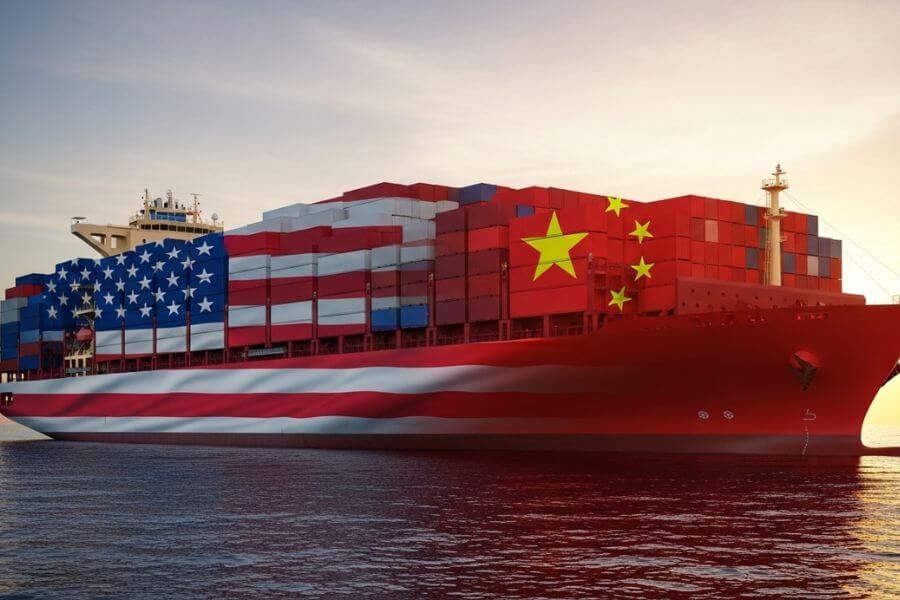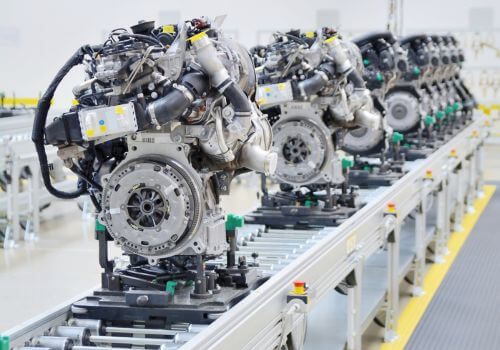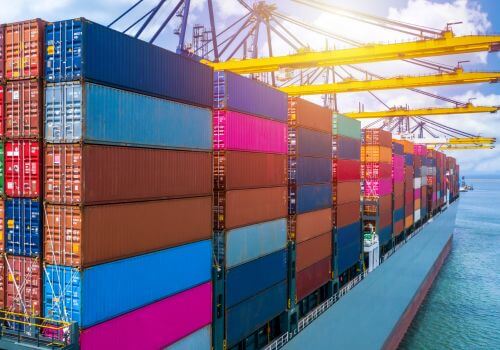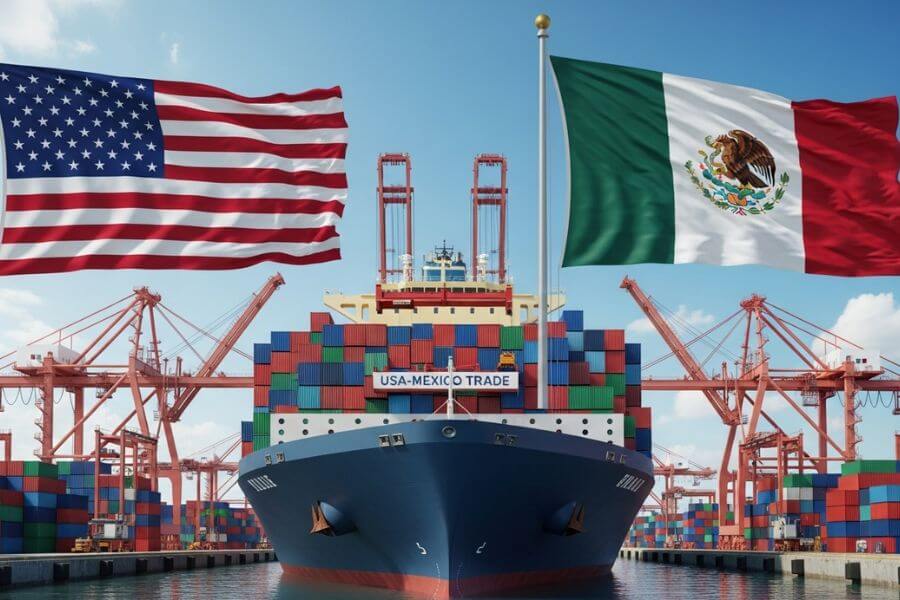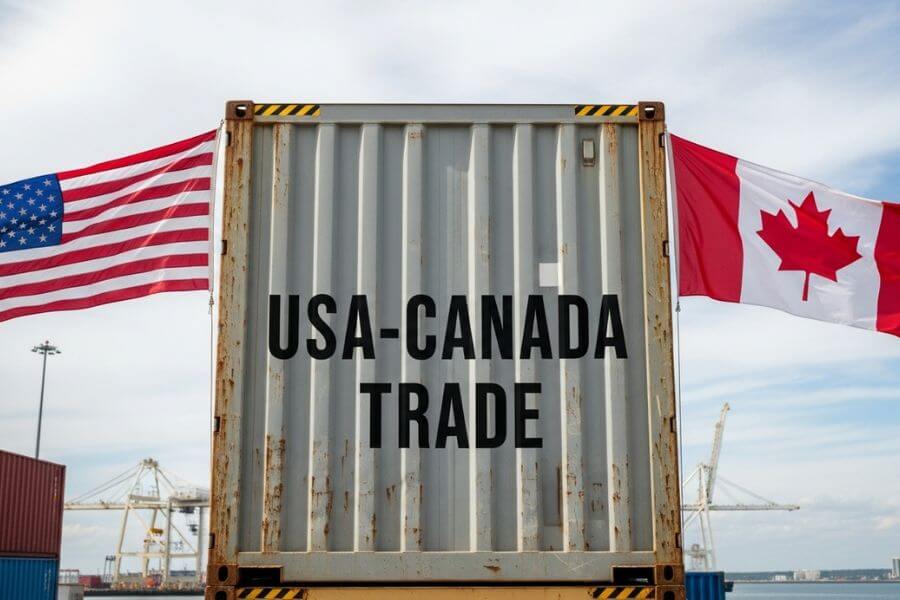Trade between the United States and China remains one of the most influential economic relationships in the world. Even with ongoing political tensions, tariff policies, and geopolitical shifts, both nations continue to rely on each other for critical goods that support manufacturing, technology, healthcare, retail, and consumer markets. Understanding the top traded products between the U.S. and China not only reveals where economic interdependence is strongest, but also helps logistics companies, importers, exporters, 3PLs, and global brands prepare for future opportunities.
In this article, we break down the top 10 most traded goods between the U.S. and China, providing insights into what drives demand, why each category matters, and how the trade landscape is evolving as we move further into 2025. Whether you’re in logistics, sourcing, e-commerce, manufacturing, or trade compliance, this guide will help you understand the products shaping the world’s largest bilateral trade corridor.
1. Electrical Machinery & Equipment
Electrical machinery has consistently topped the list of traded goods between the U.S. and China for over a decade, and that trend continues in 2025. This category includes integrated circuits, microchips, printed circuit boards, telecommunications equipment, semiconductor components, and consumer electronics parts that power everything from smartphones to electric vehicles. China remains the world’s dominant hub for electronics manufacturing and assembly, supplying American companies with cost-efficient components, while the U.S. exports high-value semiconductors and specialized equipment back to China. Demand keeps increasing as AI development, EV production, cloud computing, and home electronics continue to accelerate. Even with ongoing discussions around reshoring and semiconductor supply chain diversification, this category remains the backbone of U.S.-China trade.
2. Machinery, Engines, and Industrial Equipment
Heavy machinery and industrial equipment form the second-largest traded goods category. American companies export high-precision manufacturing equipment, gas turbines, mechanical parts, and specialized tools to support China’s expanding industrial base. Meanwhile, China ships large quantities of mid-range machinery, HVAC equipment, assembly line components, and power-generation devices back to the U.S. Construction, manufacturing, energy, transportation, and infrastructure projects in both nations continue to fuel trade. Robotics, automation equipment, and advanced manufacturing machinery are experiencing particularly strong growth due to China’s industrial modernization plans and the U.S. manufacturing renaissance, especially in clean energy and semiconductor fabrication.
3. Vehicles & Automotive Components
The automotive trade between the U.S. and China has undergone significant change in recent years, especially with the rapid rise of electric vehicles. While direct car exports fluctuate due to shifting tariffs and consumer preferences, the movement of automotive components remains massive. China exports wiring harnesses, lithium-ion batteries, EV components, interior parts, tires, and metal vehicle parts to the United States. The U.S., in turn, exports automotive technology, engines, precision sensors, and specialized systems to support China’s growing premium and EV sectors. As the EV market continues expanding globally, lithium battery cells and battery materials remain among the fastest-growing segments. With both nations racing toward larger EV adoption, automotive component trade will remain at the center of bilateral commerce.
4. Medical Instruments & Healthcare Equipment
Medical devices have become a major pillar of U.S.-China trade, especially following the global pandemic, which permanently changed demand patterns. China exports massive quantities of personal protective equipment (PPE), surgical gloves, face masks, medical consumables, and basic diagnostic devices to the U.S. At the same time, the United States ships high-end medical instruments, surgical equipment, biotechnology products, and advanced diagnostic machinery to Chinese hospitals and research institutions. As China’s middle-class population grows and healthcare infrastructure improves, demand for American medical technology continues rising. Meanwhile, China’s scale in manufacturing allows it to produce affordable, high-volume medical supplies relied on by clinics, distributors, and emergency response industries across the U.S.
5. Furniture, Bedding, and Home Goods
The U.S. imports more furniture from China than from any other country, making this one of the most consistently high-volume categories. From wooden bedroom sets to office furniture, leather couches, mattresses, and home décor items, China’s manufacturing ecosystem for furniture is unmatched in scale and cost efficiency. Despite rising competition from Vietnam, Malaysia, and Indonesia, China continues to dominate thanks to superior supply chain integration, access to raw materials, and advanced manufacturing capabilities. U.S. exports in this category tend to be smaller, mostly consisting of specialized materials and certain design-based products, but the flow of home goods from China to the U.S. remains a defining element of retail supply chains. With e-commerce growth and increased home renovation spending, this trade category shows no signs of slowing down.
6. Plastics and Plastic Articles
Plastic goods represent a critical component of U.S.-China trade because they feed into nearly every industry: packaging, automotive, construction, healthcare, toys, electronics, and everyday consumer products. China exports massive quantities of molded plastic parts, packaging material, containers, household items, industrial plastics, and resin-based components to the U.S. Meanwhile, American exports include high-grade resins, chemicals, and specialized plastic polymers used in advanced manufacturing. As sustainability initiatives grow, both nations are shifting toward recyclable and bio-based plastics, but trade volume in this category remains extremely high. Even with stricter environmental policies, plastics continue to be an essential raw material moving across the Pacific.
7. Optical, Photographic, and Scientific Equipment
This high-tech category includes everything from lenses, laboratory instruments, and microscopes to cameras, sensors, fiber-optic cables, and semiconductor manufacturing tools. China exports optical components used in electronics and consumer devices, while the U.S. sells advanced scientific instruments and high-precision optical systems to universities, biotech labs, semiconductor fabs, and R&D facilities across China. The demand for scientific equipment is driven by China’s investment in manufacturing automation, AI development, aerospace, and pharmaceutical research. At the same time, U.S. companies depend heavily on Chinese supply chains for optical components, especially for consumer electronics and industrial devices. As technology innovation accelerates, this category continues to grow rapidly.
8. Agricultural Products and Food Goods
Agriculture is one of the most politically significant sectors in U.S.-China trade. The U.S. exports soybeans, corn, wheat, sorghum, nuts, dairy products, meat, and other agricultural commodities to China, supporting millions of American farmers. China remains one of the largest buyers of U.S. soybeans, driven by rising demand for livestock feed, cooking oil, and food processing. Meanwhile, the U.S. imports various Chinese agricultural products such as processed foods, tea, seafood, fruits, vegetables, and ingredients used in packaged food production. Food safety regulations, commodity pricing, seasonal patterns, and government agreements strongly influence this sector. Despite occasional trade tensions, agricultural goods continue to be a stabilizing force in bilateral trade.
9. Textiles, Apparel, and Footwear
China has long been the world’s leading exporter of clothing and textiles, and the U.S. remains its top destination. This category includes fast fashion, athletic wear, shoes, bags, accessories, fibers, and fabrics. While apparel manufacturing has partially shifted to Vietnam, Bangladesh, and India, China still dominates due to unmatched supply chain speed, large-scale factories, and advanced textile technologies. American exports to China in this category are far smaller but include specialized textiles, cotton, and premium fashion items. As online retail and DTC brands continue booming, demand for Chinese-made clothing remains enormous. Even with rising labor costs in China, its vertical integration from fabric production to final assembly keeps it central in global fashion supply chains.
10. Toys, Games, and Sports Equipment
More than 70% of the toys sold in the U.S. are manufactured in China, making this one of the most important consumer goods categories in the entire trade relationship. From plush toys and action figures to board games, sports gear, outdoor equipment, and holiday decorations, China’s ability to mass-produce complex items at affordable prices makes it the global leader. The U.S. imports billions of dollars of toys annually, especially during Q4 holiday seasons, creating heavy seasonal trade flows. American exports to China in this sector include branded sports equipment, fitness technology, and certain licensed entertainment merchandise, but the trade primarily flows westward. As demand for premium toys, STEM learning kits, and branded merchandise grows, this category continues to thrive.
Conclusion
The economic relationship between the United States and China remains one of the most important in the world, and understanding the top traded goods between them is essential for anyone involved in logistics, global sourcing, supply chain management, or international business. From electrical machinery to agricultural products, each category reflects the strengths and needs of both nations, creating a complex but mutually beneficial trade ecosystem.
As global supply chains evolve in 2025, businesses must stay informed about shifting trade patterns, emerging policy changes, and new opportunities in high-tech, clean energy, and consumer markets. Whether you are an importer, exporter, 3PL provider, manufacturer, or analyst, understanding these top traded goods will help you navigate the world’s most influential trade corridor with confidence.

